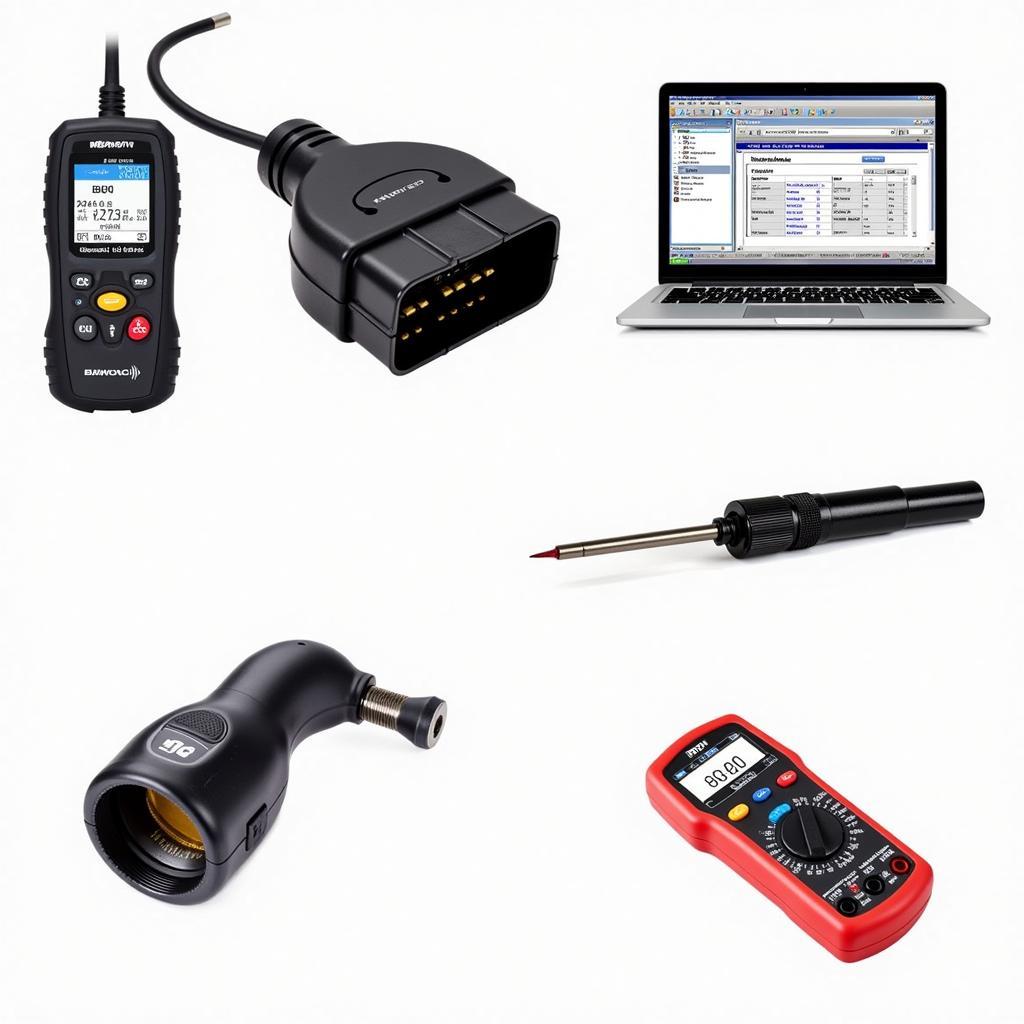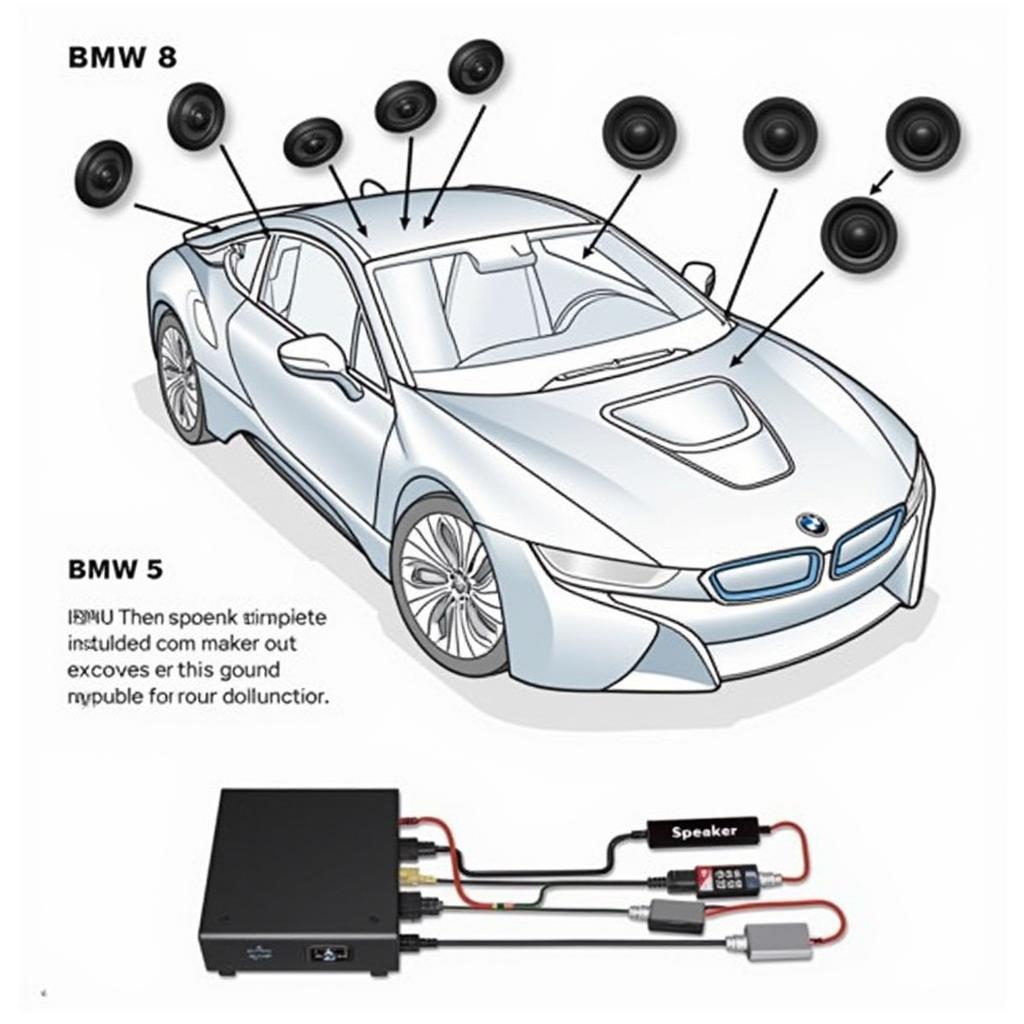Owning a BMW E90 is a thing of beauty, until the audio system starts acting up. A silent drive can quickly become frustrating, especially if you’re dealing with issues stemming from the Bremen parts audio system. Don’t worry, this guide is here to help you diagnose and potentially fix those frustrating audio gremlins in your E90.
Understanding Your BMW E90 Bremen Parts Audio System
Before diving into troubleshooting, it’s helpful to understand the components involved. The Bremen parts audio system in your E90 is known for its quality, but like any technology, it can encounter issues. These can range from software glitches to hardware malfunctions.
Common Bremen Parts Audio Problems in BMW E90s
Here are some common issues E90 owners face with their Bremen parts audio systems:
- No sound from speakers: This could indicate a problem with the amplifier, wiring, or even the head unit itself.
- Distorted audio: This usually points to a failing speaker, a problem with the amplifier’s output stage, or damaged wiring.
- Intermittent audio dropouts: This can be frustrating and is often caused by loose connections, a failing head unit, or issues with the MOST (Media Oriented Systems Transport) bus, which is the communication network for the car’s infotainment system.
- Bluetooth connectivity problems: If you’re having trouble pairing your phone or experiencing choppy audio streaming, it could be an issue with the Bluetooth module or software.
Identifying the Root of the Problem
Pinpointing the exact cause of your audio woes is crucial before attempting any fixes. Here’s where a bit of investigative work comes in:
Software or Hardware Issue?
- Software: Sometimes, a simple software reset or update can resolve audio issues. This can often be done through the iDrive system.
- Hardware: If a software fix doesn’t do the trick, you might be dealing with a hardware problem that requires a more hands-on approach.
Diagnostic Tools
Using a professional-grade OBD-II scanner capable of reading BMW-specific codes can provide valuable insights into the audio system’s health. These scanners can pinpoint faulty modules or communication errors.
Essential Tools for DIY Repairs
If you’re comfortable with basic electronics and want to try your hand at fixing the issue yourself, here are some tools you might need:
- Torx screwdriver set: For removing interior panels and accessing audio components.
- Panel removal tools: To avoid damaging interior trim during disassembly.
- Multimeter: For testing continuity in wiring and checking for voltage at various points.
- Soldering iron and solder: If any wiring repairs are necessary.
- BMW technical repair information: Accessing wiring diagrams and component locations for your specific E90 model is essential.
Troubleshooting and Repair Steps (General Guidelines)
Disclaimer: Attempting DIY repairs on your car’s electronics can be risky. Proceed with caution, and if you’re unsure about any step, consult a qualified BMW technician.
-
Check the Basics: Ensure the audio system is powered on, the volume is turned up, and the correct audio source is selected. Inspect the fuse related to the audio system in the fuse box.
-
Inspect Wiring and Connections: Carefully examine all visible wiring harnesses and connections related to the audio system, including those at the back of the head unit, amplifier, and speakers. Look for any loose, disconnected, or damaged wires.
-
Test the Amplifier: If you suspect the amplifier is at fault, you can check for power and ground signals using a multimeter. Consult a wiring diagram to identify the correct pins.
-
Test the Speakers: With the audio system on and playing a tone, carefully touch the positive and negative terminals of each speaker using the multimeter probes (set to DC voltage). If you hear a clicking sound from the speaker, it is likely functioning.
-
Software Reset or Update: If the hardware checks out, try performing a software reset on the iDrive system. Refer to your owner’s manual for instructions on how to do this. If a software update for the iDrive system is available, consider installing it.
FAQs: Bremen Parts Audio BMW E90
Q: Can I upgrade my Bremen Parts audio system with aftermarket components?
A: Yes, but it can be complex due to the integration with the iDrive system. Research compatibility carefully or consult with a car audio professional specializing in BMWs.
Q: Where is the Bremen parts audio amplifier located in my E90?
A: The location can vary slightly depending on the specific model, but it’s typically found in the trunk, either on the side panels or underneath the floor carpeting.
Q: Why am I experiencing static noise from my speakers?
A: Static noise is often a sign of a grounding issue. Check the ground connections of the head unit, amplifier, and speakers. “A poorly grounded audio system can lead to annoying static and even damage components,” advises Mark Stevenson, an automotive electronics expert and author of “The Car Audio Troubleshooting Handbook.”
Need Expert Help? Contact Cardiagtech!
Troubleshooting car audio problems can be a real headache, especially in a sophisticated vehicle like the BMW E90. If you’re still experiencing audio issues after trying these steps, it’s best to contact Cardiagtech for expert assistance. Our team specializes in remote diagnostics, programming, and software installations for a wide range of automotive issues, including complex audio system problems.
Don’t let a silent drive ruin your day! Contact Cardiagtech at +1 (641) 206-8880 or email us at [email protected]. Our office is located at 276 Reock St, City of Orange, NJ 07050, United States. We’re here to help you get your BMW E90’s audio system back to its original glory.



